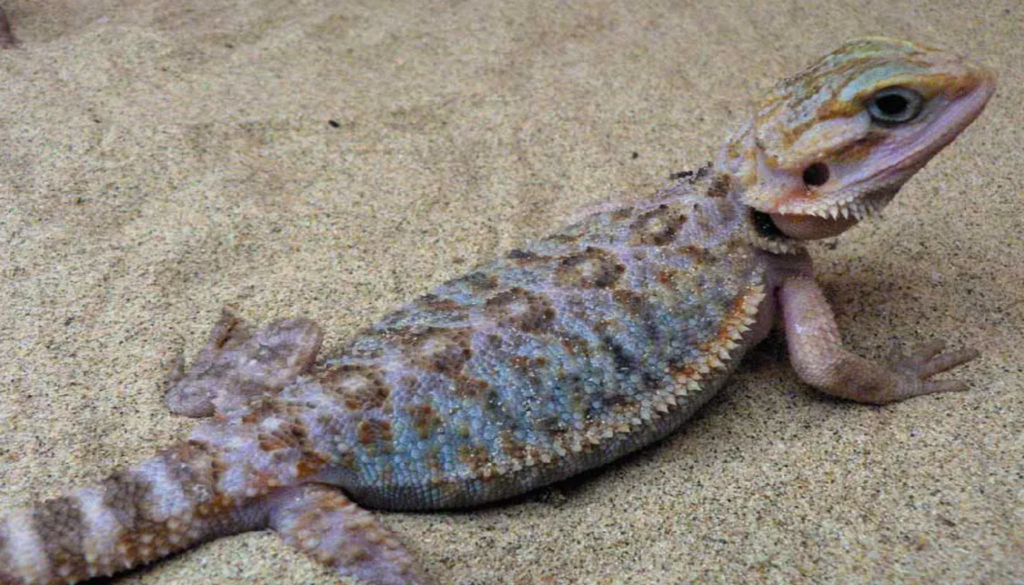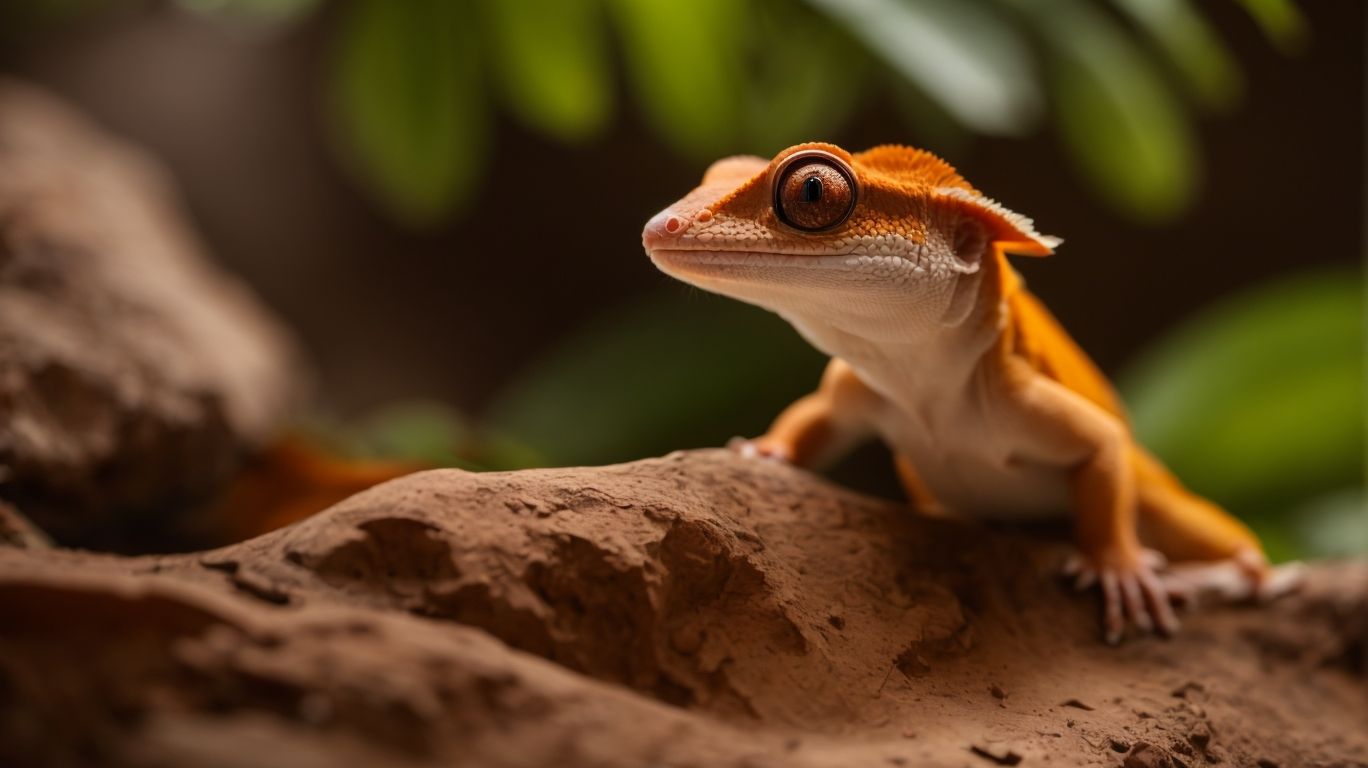
The Fascinating Features of a Blue Bearded Dragon
Table of Contents
Unraveling the Uniqueness of the Blue Bearded Dragon
The blue bearded dragon is truly a unique and extraordinary creature. With its stunning blue coloration, it immediately stands out from other bearded dragon species. This distinctive trait is a result of a genetic mutation that affects the pigment production in their scales.
Unlike other variations of bearded dragons, the blue bearded dragon lacks the yellow or orange hues commonly found in their counterparts. Instead, their scales range from a pale, silvery blue to a vibrant, deep azure.
Not only is the blue bearded dragon visually captivating, but it also possesses an intriguing set of physical features. Its beard, which is a loose flap of skin under its chin, can change color depending on its mood. When relaxed, it may appear light blue, but when agitated or excited, it can turn darker, almost black. This characteristic makes them excellent communicators, as their color-changing beard allows them to convey their emotions.
Understanding the Behavior and Personality of a Blue Bearded Dragon
Understanding the behavior and personality of a blue bearded dragon is key to providing them with the best care and creating a strong bond with your pet. Blue bearded dragons are known for their docile and friendly nature, making them a popular choice for reptile enthusiasts.
These captivating creatures have distinct personalities, and their behavior can vary from individual to individual. Some blue bearded dragons may be more outgoing and social, while others may be more reserved and prefer solitude. It’s important to spend time observing and interacting with your blue bearded dragon to understand their unique personality traits.
Blue bearded dragons are diurnal, meaning they are most active during the day. They enjoy basking under the sun to regulate their body temperature and require a warm and comfortable environment in their enclosure. Providing them with ample hiding spots and climbing branches allows them to mimic their natural habitat and helps to reduce stress.
In terms of behavior, blue bearded dragons are generally calm and gentle. They are not known for displaying aggressive behaviors towards humans or other animals. However, it’s important to approach and handle them with care, as sudden movements or rough handling can startle or stress them.
Communication is an important aspect of their behavior. Blue bearded dragons can communicate through body language, including head bobbing, arm waving, and puffing up their beard. These displays can signify dominance, submission, or even aggression. Observing and understanding these cues can help you interpret your blue bearded dragon’s mood and feelings.
When it comes to socialization, blue bearded dragons can bond with their owners through gentle handling and regular interaction. They may enjoy being gently petted or having their chin scratched. Building trust and forming a bond with your blue bearded dragon is a rewarding experience and contributes to their overall well-being.
Discover the Blue Bearded Dragon’s Natural Habitat and Diet
The blue bearded dragon, like its more common bearded dragon relatives, is native to Australia. These fascinating creatures can be found in the arid regions of central and western Australia, where they inhabit a variety of environments. From the rocky outcrops of the Outback to the dense woodlands and shrublands, the blue bearded dragon has adapted to thrive in diverse habitats.
In their natural habitat, blue bearded dragons are well-equipped to survive in harsh conditions. They are experts at thermoregulation, basking in the sun to warm themselves and retreating to shaded areas to cool down. The rocky terrain provides them with ample hiding spots and allows them to blend into their surroundings for protection.
Blue bearded dragons are also skilled climbers, often found perched on low branches or rocks. Their agility and ability to climb allow them to survey their surroundings and hunt for prey. They have a diverse diet, feeding on insects, small rodents, vegetation, and even small reptiles.
An Insight into the Breeding and Life Cycle of the Blue Bearded Dragon
Breeding and understanding the life cycle of a blue bearded dragon is a fascinating journey. When it comes to breeding these captivating creatures, there are a few important considerations to keep in mind.
Blue bearded dragons reach sexual maturity at around 1-2 years of age. It is important to ensure that both the male and female dragons are healthy and in optimal condition before attempting to breed them. A healthy diet and proper care leading up to breeding can greatly increase the chances of a successful mating.
Breeding usually takes place during the warmer months, as the increased temperatures stimulate the reproductive cycle. During the breeding process, the male will display courtship behavior, such as head bobbing and arm waving, to attract the female’s attention. If the female is receptive, mating will occur, usually lasting several minutes.
After mating, the female blue bearded dragon will lay a clutch of eggs, typically 20-30 eggs, in a prepared nesting site. These eggs need to be carefully incubated at a specific temperature and humidity level for them to successfully hatch. The incubation period typically lasts around 60-80 days, depending on the temperature.
Once the eggs hatch, baby blue bearded dragons emerge. These hatchlings are usually around 4-6 inches in length and will require a separate enclosure to ensure their safety and proper growth. It is crucial to provide them with a suitable diet consisting of appropriately sized insects and calcium-rich greens to support their growth and development.
How to Care for Your Blue Bearded Dragon
Caring for your blue bearded dragon is crucial to ensure their health and well-being. These magnificent creatures have specific needs that must be met to thrive in captivity. Here are some essential tips on how to care for your blue bearded dragon.
First and foremost, providing the right enclosure is key. Blue bearded dragons need a spacious and secure tank or vivarium to call home. The enclosure should be large enough to accommodate their size, with plenty of room for climbing and exploring. It’s important to provide hiding spots and branches for them to mimic their natural habitat.
Temperature and lighting are also crucial aspects of their care. Blue bearded dragons require a basking spot with a heat source, such as a heat lamp or ceramic heater, to regulate their body temperature. A UVB light is essential to provide them with the necessary UV radiation for proper calcium absorption. Be sure to monitor the temperatures regularly and maintain the proper heat gradient within the enclosure.
Diet plays a significant role in the health of your blue bearded dragon. These lizards are omnivores, meaning they eat both plant and animal matter. Their diet should consist of a variety of insects, such as crickets, mealworms, and roaches, as well as leafy greens, fruits, and vegetables. It’s important to provide a balanced and nutritious diet to ensure they receive all the necessary nutrients.
Proper hydration is also essential. Blue bearded dragons require a water bowl in their enclosure, as well as regular misting or a dripper system to ensure they stay hydrated. Always provide fresh and clean water to drink.
Regular veterinary check-ups are recommended to ensure your blue bearded dragon is in optimal health. A reptile veterinarian can provide guidance on diet, habitat setup, and any potential health issues.
Finally, socialization and mental stimulation are vital for the well-being of your blue bearded dragon. Handle them gently and regularly to build trust and ensure they are comfortable with human interaction. Providing toys and environmental enrichment can help stimulate their natural behaviors and prevent boredom.
Addressing Common Health Issues in Blue Bearded Dragons
One of the most important aspects of owning a blue bearded dragon is ensuring their health and well-being. Like any pet, blue bearded dragons can face various health issues that may require attention and care. By addressing these common health issues, you can help ensure your blue bearded dragon lives a happy and healthy life.
One common health issue in blue bearded dragons is metabolic bone disease (MBD). MBD occurs when there is a deficiency in calcium, phosphorus, or vitamin D3, which can lead to weakened bones and deformities. To prevent MBD, it’s crucial to provide a balanced diet rich in calcium and vitamin D3, as well as a UVB light to aid in proper calcium absorption.
Another common health concern in blue bearded dragons is respiratory infections. These infections can occur due to improper temperature and humidity levels or poor ventilation in their enclosure. It’s important to maintain the proper temperature and humidity within the enclosure and ensure proper ventilation to prevent respiratory issues.
Parasites, such as mites or internal worms, are also a common health issue in blue bearded dragons. Regular fecal examinations and preventative treatments can help keep parasites under control.
Myths and Misconceptions about the Blue Bearded Dragon
When it comes to blue bearded dragons, there are some common myths and misconceptions that may confuse or mislead potential owners. Let’s debunk these myths and set the record straight!
Myth #1: Blue bearded dragons are venomous.
Fact: This is completely false. Blue bearded dragons, like all bearded dragons, are completely harmless and do not possess any venom or toxic substances. They rely on their camouflage and defensive behaviors, such as puffing up their beard and displaying aggression, to ward off potential threats.
Myth #2: Blue bearded dragons require a lot of maintenance.
Fact: While blue bearded dragons do require proper care and attention, they are not overly high maintenance. As long as their enclosure is set up correctly, with the right temperature and lighting, and they are provided with a balanced diet, they can thrive with minimal effort.
Myth #3: Blue bearded dragons need a large enclosure.
Fact: While it is important to provide a spacious and secure enclosure for blue bearded dragons, they do not necessarily require a massive space. A 40-gallon tank or vivarium is usually sufficient for an adult blue bearded dragon, as long as it allows for proper heat and light gradients and includes adequate hiding spots and climbing branches.
Myth #4: Blue bearded dragons do not need social interaction.
Fact: Blue bearded dragons, like all reptiles, can benefit from social interaction and mental stimulation. While they may not require as much social interaction as some other pets, they still enjoy gentle handling and human interaction. Regular socialization can help them bond with their owners and prevent boredom.
Myth #5: Blue bearded dragons are expensive to keep.
Fact: Blue bearded dragons, like other bearded dragons, are not necessarily expensive to keep. The initial setup costs, such as purchasing an enclosure and necessary equipment, can be a bit pricey, but the ongoing expenses are generally affordable. Their diet consists mainly of insects, which are relatively inexpensive and widely available. As long as you provide them with the proper heating and lighting, and ensure their enclosure is clean and well-maintained, the costs of keeping a blue bearded dragon can be manageable. It’s important to do your research and budget accordingly to ensure you can provide for all of their needs. Remember, responsible pet ownership includes both financial and emotional commitment.
Related Posts

Incubating Crested Gecko Eggs: Essential Techniques and Tips
Crested geckos are fascinating reptiles that are known for their…

Red Crested Gecko Health: Common Issues and Preventive Care
Are you a proud owner of a red crested gecko?…

Creating the Ideal Environment for Your Red Crested Gecko
Do you own a red crested gecko or are you…

No Comments